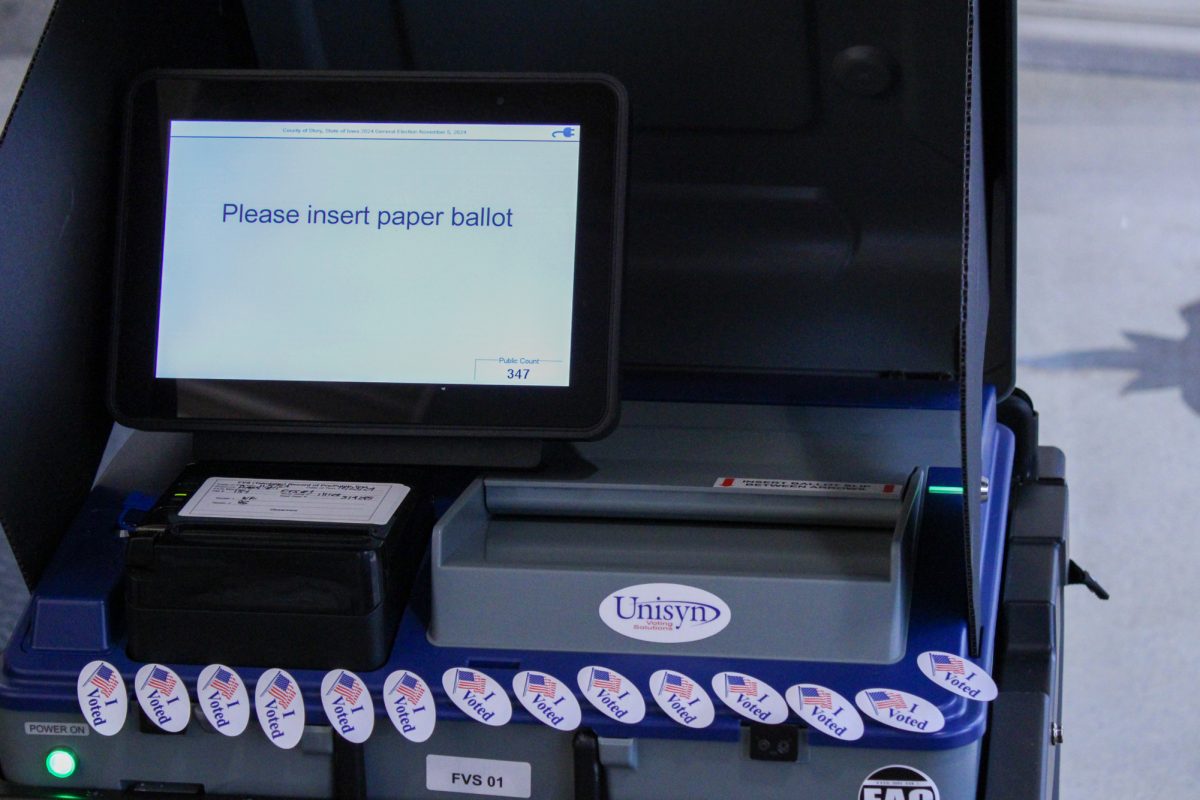Recognize the generous and get more from them
February 23, 1999
The mainstream news media have recently done the world a tremendous disservice in treating a recent story on Bill Gates as minor news.
In the first week of February, it was revealed that the Microsoft co-founder had donated $3.35 billion to charity.
It is believed to be the largest set of charitable gifts in the history of mankind. For comparison, consider that the entire Iowa Department of Education budget for 1997-1998 was less than $2 billion.
Unfortunately, the donation didn’t receive much coverage, which is a travesty.
The percentage of Americans not making charitable donations increased 5 percent from 1993 to 1995.
Though those who do give have been giving slightly more than they used to, it is difficult to encourage donations without holding up others as shining examples of what we should be doing.
Gates’ contribution (equal to roughly 4 percent of his net worth) is certainly not immune to criticism.
For one thing, both organizations he gave to have the Gates name: the William H. Gates Foundation, which received $2.23 billion and is run by Gates’ father, and the Gates Learning Foundation, which pocketed a mere $1.11 billion.
And of course the timing (the gifts were made in the midst of some rather unsavory Microsoft PR in the antitrust trial) is also somewhat suspect.
So what? We should bring every billionaire to court if it means they’ll give 10-figure handouts.
Unfortunately, with the coverage this donation got, it’s unlikely giving large sums to meaningful charities is ever going to be in fashion with the wealthy.
Whatever gains Gates may have hoped to realize with this gesture have gone largely unrealized because the media didn’t regard the event as particularly newsworthy.
Has it occurred to anyone that people like our friend Bill aren’t likely to toss away large sums of cash if they don’t receive recognition?
His donation should have been a major story. Enough about Lewinsky: the barbershop and bus-stop talk should be about Gates.
Charitable giving needs to permeate our collective conscious much more than it now does, and gestures like Gates’ are the perfect tools to nurture such consciousness.
As I said before, Gates gave roughly 4 percent of his net worth. That’s slightly above the average 3.4 percent of household income given to charity by those making over $100,000 a year.
Interestingly, other than those in the bracket just mentioned, contributions as a percent of income actually decrease as income goes up.
Those making between $40,000 and $49,000 only give 1.3 percent, for example, while those who make $10,000 to $19,000 give 2.8 percent away (All figures are for 1995, from “Giving and Volunteering in the United States,” 1996 edition).
In Gates’ case, of course, 4 percent really doesn’t seem like a huge sacrifice.
If your net worth is 82 billion dollars, losing 4 percent means you have to settle on gold-plated lightswitch covers rather than the solid ones.
On the other hand, 4 percent of a poorer person’s income can make the difference in affording any electricity at all.
Gates’ gesture is rare and should be held up as a reminder that charities depend on each and every one of us.
After all, public opinion certainly isn’t in favor of having the government help anyone out, is it?
Republicans like to say people will give more if their taxes are cut. Nonsense. There’s no historical evidence supporting that claim.
The only thing that will bring our charitable giving rates up from the paltry 2.2 percent they were at in 1995 is to make it socially advantageous to do so.
We should go out of our way to commend the philanthropists among us. Especially those like Gates who give the money to genuinely worthwhile groups.
After all, most donations by the rich are given to high-society charities (private schools, museums, etc.) so that the money really just continues to benefit the rich.
Gates, on the other hand, chose to give to foundations that provide grants for health, population and education projects worldwide, and to focus on closing the gap between poor children and wealthier ones in Internet access and computer training.
Sure, those computers probably will run Microsoft products. But can you really hold that against him?
Ben Byrne is a senior in graphic design from Edina, Minn. Lutefiske, lutefiske, lefsa, lefsa, he’s from Minnesota, ya sure, you betcha!






